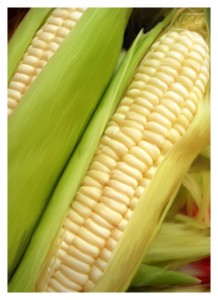by Kellene
[caption id="attachment_4256" align="alignleft" width="218" caption="You might be surprised to learn what is made from corn."] [/caption]
[/caption]
Did you know that batteries, diapers, cheese, peanut butter, Coco-cola, Motrin, vanilla extract, baking powder, white vinegar, saccharin, Sweet and Low, charcoal, a slew of household cleaners, drinking alcohol, condiments, toothpaste, dental floss, toilet paper, iodide salt, finger paint, crayons, and margarine all have corn products in them? This list is in addition to the obvious corn products that you are already no doubt familiar with. Corn is in a slew of food additives as well such as maltodextrin, pumaric acid, di-glycerides, Ethel acetate, xanathan gum, semolina, absorbic acid, gluten, citrus cloud emulsion, saccharin, calcium stearate, xylitol, and sorbitol as well as a litany of other “ides, ites, and tols.” Did you also know that